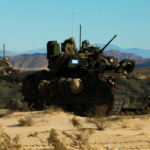
The Army will hold an industry day on Aug. 12 for a new effort to find capabilities to improve operational cyberspace situational awareness, with plans to award a prototype contract next March. The industry day will take place at Ft. Belvoir in Virginia with officials set to detail project requirements ahead of an initial “prototype challenge” in October. “Army commanders lack the ability to develop cyberspace situational understanding by detecting, monitoring, and visualizing friendly, neutral, and threat elements within cyberspace…

 By
By 











